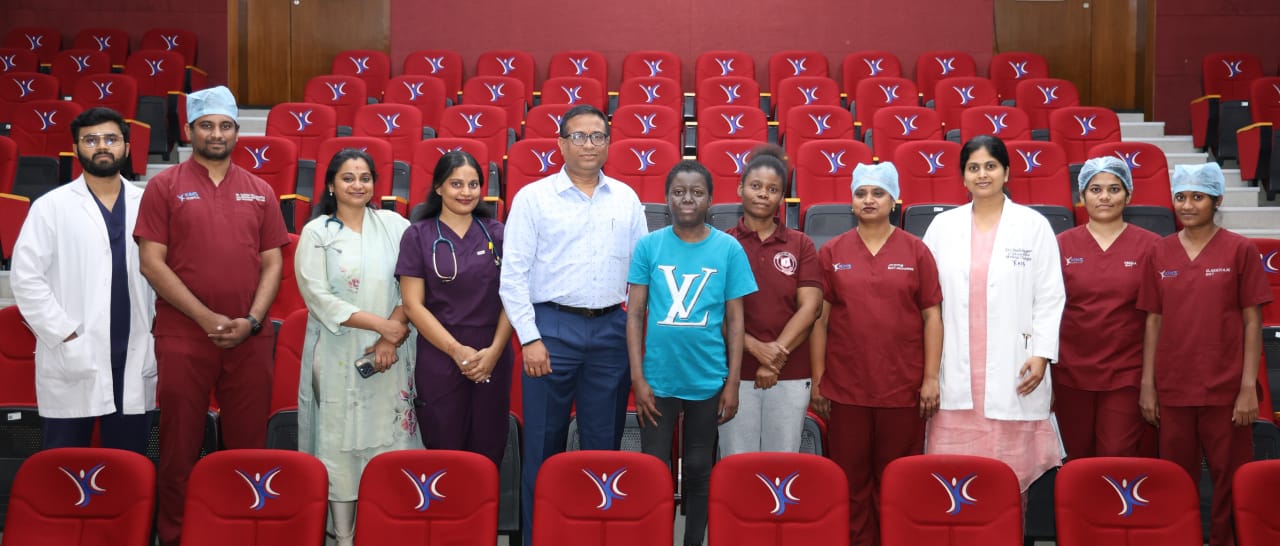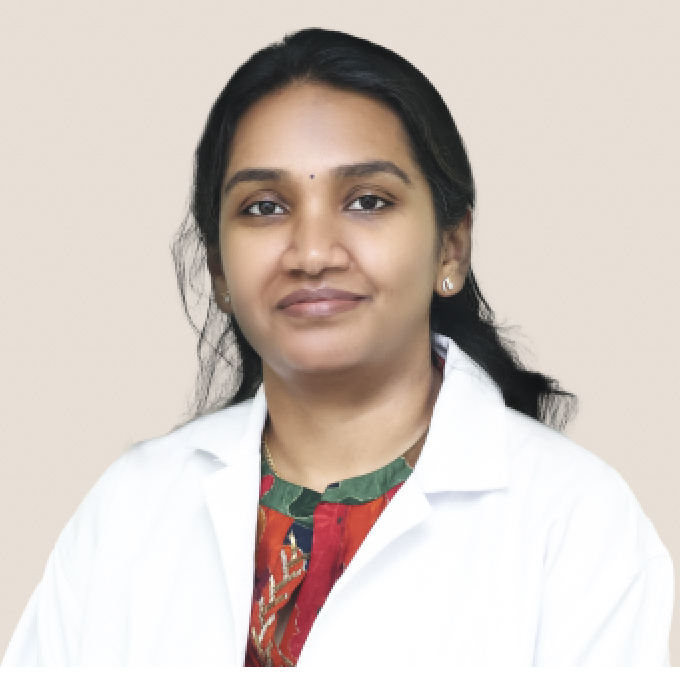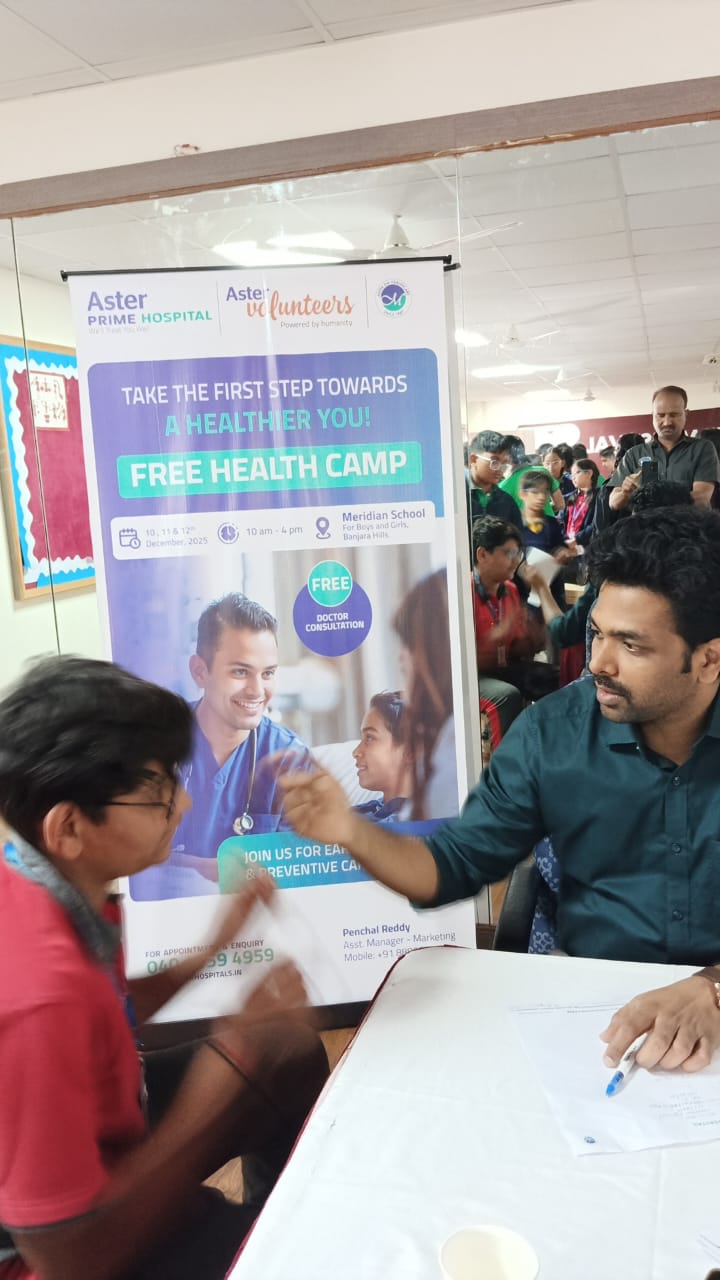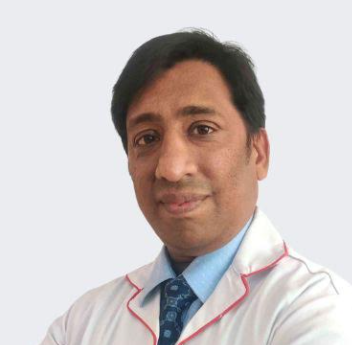23, Dec 2025
NIIMS–Yashoda Medicity Conclude 20th International Spine & Pain Workshop
NIIMS Medical College in Association with Yashoda Medicity Concludes 20th International Spine & Pain Live-cum-Cadaver Workshop
Noida, Dec 23: Noida International Institute of Medical Sciences, Medical College, Noida International University, in collaboration with Yashoda Medicity, Indirapuram, successfully concluded its 20th International Spine & Pain Live-cum-Cadaver Workshop, an intensive 8-day academic and hands-on training program aimed at advancing pain management practices among medical professionals.
The workshop witnessed participation from delegates across India and abroad, making it a significant international academic event in the field of pain medicine. The program was conducted and mentored by Dr. Neeraj Jain, an internationally acclaimed pain specialist, marking his 20th consecutive training workshop dedicated to skill enhancement and knowledge upgradation of pain physicians. Dr. Shantanu Mallik from Mumbai also played a key role in training faculty members and delegates during the workshop.
Dr. Neeraj Jain, in his keynote, said,
“Conducting the 20th International Spine and Pain Live-cum-Cadaver Workshop has been a deeply fulfilling experience. The core objective of this initiative is to empower pain physicians with precise anatomical understanding, evidence-based techniques, and hands-on expertise so that chronic pain can be managed effectively without unnecessary surgical interventions. By continuously upgrading skills through structured training, we aim to build a strong community of pain specialists who can deliver safer, more accurate, and patient-centric pain management solutions across the country and beyond.”
The cadaveric training sessions, hosted at the Noida International Institute of Medical Sciences, provided participants with hands-on exposure to advanced spine and pain intervention techniques. Faculty members from Yashoda Medicity, including Dr. Sunil Sharma, Dr. Rajshree, and Dr. Rakhi Goyal, contributed actively to the academic sessions, sharing clinical insights and best practices.
Dr. Ranjit Ghuliani, MS, NIIMS, said,
”We are deeply grateful to our leadership for their constant encouragement and visionary support. I sincerely thank Dr. Devesh Kumar Singh, Chairman, Noida International University, and Dr. Uma Bhardwaj, Vice Chancellor, NIU, for fostering an academic environment that enables such high-impact international programs. My appreciation also extends to Mr. Raj Vardhan Dixit for his invaluable guidance and administrative support, which played a crucial role in the smooth and successful conduct of this workshop. Such initiatives significantly strengthen our commitment to excellence in medical education and advanced clinical training.”
Addressing the growing relevance of pain medicine, experts highlighted that chronic pain has emerged as a widespread health concern, affecting individuals across all age groups. Conditions such as low back pain, sciatica, neck pain, knee pain, and other joint-related disorders are increasingly prevalent. With a strong emphasis on non-surgical pain management, pain physicians are emerging as frontline specialists in addressing this modern healthcare challenge.
Workshops like these, regularly conducted by Dr. Neeraj Jain, play a crucial role in enhancing the clinical capabilities of pain specialists while also contributing to greater awareness about advanced pain management options among the medical community and the general population.
- 0
- By Neel Achary
22, Dec 2025
A Conqueror of Death: The Zambian Nurse Who Defied All Odds
Hyderabad, Dec 22: Extraordinary self-belief, unwavering hope, and world-class medical care came together to turn a 27-year-old nurse from Zambia into a true conqueror of death. Her name is Mumba Margaret. She was diagnosed with one of the most aggressive and life-threatening blood cancers—Acute Myeloid Leukaemia (AML). The cancer was first detected in September 2023. Doctors advised that she required highly advanced treatment and a stem cell (bone marrow) transplant. Determined to survive at any cost, she travelled thousands of miles and reached KIMS Hospital, Secunderabad, seeking hope and life.

Mumba Margaret’s treatment journey was far from easy. Even before the stem cell transplant could be performed, she was diagnosed with tuberculosis. During treatment, the leukemia relapsed, making another round of chemotherapy necessary. In the meantime, she suffered multiple severe infections. Despite facing countless complications, Mumba remained hospitalized for nearly 40 days, fighting with remarkable courage and resilience. Details of her condition and the treatment provided were shared by Dr. Narendra Kumar Thota, Head of the Hemato-Oncology Department, Stem Cell and Bone Marrow Transplant Specialist at KIMS Hospital, along with his team.
On June 19, 2025, Mumba Margaret underwent her first stem cell transplant at KIMS Hospital. However, post-transplant, she developed extremely rare and life-threatening complications that occur in only a very small number of patients. One of them was dyselectrolytemia, a condition where levels of sodium, potassium, calcium, magnesium, and chloride in the blood rise dangerously, which can lead to severe weakness, nausea, vomiting, seizures, kidney failure, and other serious risks. She also developed febrile neutropenia, a condition marked by a drastic reduction in white blood cells that fight infections. Additionally, her heart and lung functions were severely compromised.
She further suffered from Posterior Reversible Encephalopathy Syndrome (PRES), which caused sudden headaches, seizures, blurred vision, confusion, loss of consciousness, and swelling in the posterior part of the brain.
At one point, it seemed there was almost no chance of survival. Mumba experienced more than seven cardiac arrests, requiring repeated CPR to revive her. Each time, the stem cell transplant team, critical care specialists, and cardiology teams made relentless efforts to save her life. Alongside this extraordinary medical intervention, Mumba herself displayed incredible mental strength and an unyielding will to live. The highest standards of medical care, coordinated multidisciplinary treatment, advanced technology, and constant vigilance by the medical teams at KIMS ultimately turned the tide in her favour.
Today, Mumba Margaret stands as a symbol of hope. Having conquered aggressive leukaemia and survived a series of life-threatening complications, she has reclaimed her life. After months of intensive treatment, she is now healthy and stable. She is fully prepared to return to her home country, Zambia, with renewed strength. With the joy of reuniting with her family and the dream of resuming her nursing profession, she is ready to begin a new chapter of life.
Mumba’s journey is a testament to the power of modern medicine and the unwavering commitment of the KIMS Oncology Department. The dedication of the haematology and stem cell transplant teams, combined with the extraordinary courage of this young nurse, secured her future. Her life story proves that courage has no limits—and that with the right treatment and strong hope, even the toughest battles can be won.
22, Dec 2025
KIMS Hospitals Launches Spine Robot for First Time in Telugu States
Hyderabad, Dec 22: KIMS Hospitals CMD Dr. Bollineni Bhaskar Rao stated that the hospital has always been at the forefront of adopting the latest medical innovations from across the world. He was speaking at a programme held at a Novotel hotel in the city on the occasion of the launch of the Spine Robot, introduced for the first time in the Telugu states.

Dr. Bhaskar Rao said that spine-related surgeries demand the highest level of precision and that no hospital in the Telugu states had so far used robotic technology for such procedures. By introducing the spine robot for the first time, KIMS Hospitals has ushered in a new era in spine surgeries, he added. Earlier, Chief Robotic Joint Replacement Surgeon Dr. Anne Sai Lakshman welcomed the guests attending the programme.
Later, Senior Consultant Neurosurgeon and Head of the Neurosurgery Department at KIMS Hospital, Dr. Manas Kumar Panigrahi, explained that the spine robot, manufactured by US-based Medtronic, will be installed at KIMS Kondapur Hospital. During surgery, a CT scan is taken and fed into the robot, enabling surgeons to pre-plan the placement of screws and the extent of bone cutting required. The robot then fixes the screws with 99.9% accuracy, ensuring virtually no risk of nerve damage and better patient recovery, he said.
KIMS Sunshine Hospital MD and Chief Joint Replacement Surgeon Dr. AV Gurava Reddy said that
“robotic systems have already ensured complete accuracy in knee replacements and other surgeries. By extending robotic technology to spine surgeries, KIMS Hospitals has created a new chapter in medical history”, he remarked.
Consultant Minimally Invasive Spine Surgeon at KIMS Kondapur, Dr. K. Srikrishna Chaitanya, said that
“robotic spine surgery is especially beneficial for children, particularly for treating spinal deformities such as hunchback, where absolute precision is critical.”
Consultant Neurosurgeon and Minimally Invasive Spine Surgeon at KIMS Hospital, Dr. BV Savithr Sastry, noted that robotic spine surgery is currently available at only four or five centres across India, and none in Telangana or Andhra Pradesh. Introducing this advanced surgical robot at KIMS Kondapur Hospital is a matter of great pride, as it enables the highest standards of patient care, he said.
During the programme, Dr. Soumyajit Basu, Head of the Spine Surgery Department and Director of the Spine Fellowships Programme at Kothari Medical Centre, Kolkata, also spoke and congratulated the KIMS Hospital management for bringing such advanced medical technology to the Telugu states.
22, Dec 2025
Meditation is a need for collective progress towards becoming Viksit Bharat – Hon’ble Vice President of India
Hyderabad, Dec 22: Over 30,000 participants joined in person, with a million more from around the globe participating virtually, at the Heartfulness-led World Meditation Day event at Kanha Shanti Vanam, home to the world’s largest meditation hall. Themed ‘One World, One Heart’, the meditation led by Revered Daaji, Guide of Heartfulness and President of Shri Ram Chandra Mission, reflected the spirit of collective consciousness and shared humanity. The event was attended by the Hon’ble Vice President of India – Shri C. P. Radhakrishnan; the Hon’ble Governor of Telangana – Shri Jishnu Dev Varma; and Hon’ble Minister of IT of Telangana – Shri Sridhar Babu who also took part in the meditation.

Speaking about the impact of the event, the Hon’ble Vice President of India, Shri C. P. Radhakrishnan, “I appreciate the Heartfulness movement for its unparalleled commitment to peace, harmony and spiritual wellbeing. Heartfulness meditation is being practiced by police force in Madhya Pradesh, and they have witnessed a great change in their consciousness. As the Global spiritual guide, Daaji has made meditation simple practice for all ages and culture. His teachings emphasise balance, compassion and inner transformation to build a sound society through conscious living. Meditation leads to inner peace, clarity of heart and mind. India has centuries of spiritual wisdom attained by rishis as part of its heritage and through the teachings of vedas, Upanishads and Gita has contributed immensely to the world. The true source of all wisdom leads to culmination of jeeva into Shiva. Meditation is a need for collective progress towards becoming Viksit Bharat – not only as an economic leader but also as a spiritual leader. When we meditate, we transcend the barrier of humanity towards oneness towards society and nature. Let us lead by this example through spirituality and sustainability. Embrace mental peace and harmony.”
The Hon’ble Governor of Telangana, Shri Jishnu Dev Varma, said: “It is a privilege to be here honouring Indian’s timeless wisdom. Meditation brings clarity, helps discover our inner being, it guides the inner journey from untruth to truth, darkness to light, mortality to immortality. Our ancient wisdom suggests that through meditation ego is dissolved, allowing nations to embrace; it nurtures wellness and empathy and goodwill and contentment. This world meditation day, collective meditation can elevate humanity from agitation to clarity, division to oneness, impulse to restraint and collective observance and universal wellbeing.”
Speaking about the initiative, Revered Daaji, Guide of Heartfulness and President of Shri Ram Chandra Mission said, “Meditation helps us to understand the purpose of life and yet meditation comes with practice. The processes is eased through Pranahuti – a divine energy which accelerates our journey to the ultimate Destination. Meditation in Sanskrit means Dhyana – a word which is a derivative of Dhi and Yan which is akin to a vehicle that transports one’s consciousness to the Divine. It is a tool to drop the inertia and arrive at a higher consciousness. Just as our body needs nourishment, so does our mind needs nourishment which comes through meditation. I am overjoyed to have our esteemed dignitaries who are also advocating meditation through Pranahuti and the innumerable numbers participate in today’s meditation to raise our collective consciousness.”
In the year 2024, the United National General Assembly unanimously declared 21 December coinciding with winter solstice as World Meditation Day when humanity would go inwards for peace. Heartfulness has been touching millions of hearts around the world creating a powerful wave of peace. 50000 police personal across 2600 meditation centres and police stations in Madhya Pradesh meditated in group today and vowed to meditate every Sunday in the police station, in an unprecedented historic moment for the nation and world. For this Shri Kailash Makwana – DGP Madhya Pradesh, was presented the Heartfulness Changemaker Award for contributed the initiative in the police force.
The session was open to everyone, including youth, students, professionals, and people from all walks of life. The meditation featured the transmission of Pranahuti by Daaji, a yogic energy that supports a shift into subtler states of consciousness and a natural sense of calm. Rooted in the teachings of Lalaji Maharaj and Babuji Maharaj, Heartfulness has grown into a global movement and continues to reach people across continents under Daaji’s guidance. Many practitioners have testified to the effectiveness of Heartfulness meditation, citing greater emotional steadiness, deeper clarity, and a more composed response to daily challenges.
Heartfulness rests on a simple observation: much of our lives is shaped by what we feel and the quiet inspirations that guide us. The practice encourages individuals to pay attention to this inner space with clarity. When the mind and heart begin to work in tune, life is more balanced. This is why Heartfulness focuses on meditating on the heart, a practical way of listening inward and navigating everyday life with a clearer sense of direction.
20, Dec 2025
Kailash Deepak Hospital to Organise Fertility Awareness Drive, Aiming to Break IVF Stigma
Delhi, Dec 20:- Kailash Deepak Hospital,Karkardooma to organise a Free IVF Mega Camp on Saturday, December 20, as part of its ongoing initiative to reduce stigma around infertility and ensure that couples receive timely, evidence-based reproductive health evaluation. The camp will be led by Dr. Monika Gupta, Head Kailash IVF and is expected to witness strong participation from couples seeking clarity on fertility concerns they may have postponed addressing.
The initiative will offer free consultations with infertility specialists, along with male and female fertility evaluations and complimentary sonography for cases requiring further diagnostic insight. The camp is expected to attract individuals seeking guidance for a wide spectrum of conditions, including PCOS, ovulation disorders, endometriosis, male infertility, hormonal imbalances and lifestyle-related reproductive issues.
Speaking ahead of the initiative, Dr. Monika Gupta said;
“The camp aims to address infertility as a significant yet often unspoken health challenge. Many couples continue to struggle with reproductive issues but delay seeking medical help due to stigma, hesitation or misinformation. Such delays can limit treatment options and impact outcomes.” She further added, “The camp is designed to provide couples with factual clarity rather than assumptions. People often come in unsure of what they actually need. Many believe IVF is the default solution, when in reality several cases can be effectively managed through simpler interventions such as IUI or ovulation induction. Accurate assessment helps couples make informed decisions instead of navigating the process in confusion.”
The camp will provide a safe, judgement-free environment where couples can openly discuss deeply personal concerns. Participants will also have the option to opt for follow-up evaluations and structured fertility planning based on medical recommendations.
Kailash Hospital stated that the objective of the camp is not just to provide free access to fertility consultations but also to normalise timely reproductive health check-ups and address the emotional burden many couples carry silently. Encouraged by the anticipated response, the hospital has announced plans to continue organising similar initiatives to ensure wider access to ethical, reliable and science-backed fertility guidance, free from financial or social barriers.
19, Dec 2025
Max Healthcare Announces Entry into Pune with a 450-Beds Hospital, Investment of over INR 1000 Cr
16, Dec 2025
Everyday Environmental Toxins Raise Growing Concerns for Breast Health
Hyderabad, Dec 16:- Breast health begins with awareness. It’s more than routine check-ups, it’s about understanding the hidden risks woven into our everyday lives. From the plastics we use to the air we breathe, certain chemicals and pollutants can quietly affect our hormones and long-term breast health, often without us even realizing it.
Take common chemicals like BPA and phthalates. These are often found in plastic bottles, food packaging, cosmetics, and even fragrances. They’re known as endocrine disruptors, meaning they can mimic or interfere with natural hormones such as estrogen. Lab studies show that these chemicals can change how breast cells grow, raising questions about a possible link to cancer.
However, research in humans hasn’t given us a clear answer yet. Some studies, even one from India found higher levels of phthalates in women with breast cancer, while many larger global studies have not seen the same pattern. Experts agree that more long-term research is needed, but most recommend reducing unnecessary exposure as a sensible precaution.
Thankfully, small everyday choices can help;
• Don’t heat food in plastic containers
• Use glass or stainless steel whenever possible
• Choose fragrance-free or “clean” personal care products
• Support eco-friendly practices that reduce plastic and chemical pollution
Air pollution is another growing concern for breast health. Long-term exposure to pollutants like NO₂ and PM2.5 may slightly increase breast cancer risk. These pollutants can cause inflammation and damage to breast cells over time. A recent U.S. National Institutes of Health study even found higher rates of certain hormone-related breast cancers in women exposed to high levels of PM2.5. Still, scientists caution that more evidence is needed, since these studies observe trends rather than proving cause and effect.
While science continues to explore the link between environmental toxins and breast health, one thing remains clear: prevention goes beyond medicine. Cleaner air, safer products, and mindful daily habits not only strengthen breast health, they help build a healthier, more sustainable world for everyone.
15, Dec 2025
FUJIFILM India Expands Advanced MRI Access in East with APERTO Lucent Installation in Siliguri
Siliguri, Dec 15: FUJIFILM India, a leader in advanced diagnostic imaging solutions, has announced the installation of its state-of-the-art APERTO Lucent Open MRI system at Mothercare Centre Airport Plaza Building Bagdogra Naxalbari Block Close to Siliguri District, Darjeeling, strengthening a partnership that spans more than a decade. The centre, led by Director, Dr. Ranjit Bhagat, has long relied on FUJIFILM India’s CR, DR and ultrasound technologies, and this latest installation marks a transformative step forward in expanding high-quality MRI access for communities across North Bengal.

The APERTO Lucent brings together precision imaging and patient-centric design, offering a uniquely open, comfortable scanning experience through its single-pillar structure and True OPEN Bore architecture. Equipped with a 0.4T permanent magnet, the system delivers stable, high-clarity imaging at low running costs, while its IP-RAPID technology significantly reduces scan times without compromising detail, helping clinicians diagnose complex neurological, musculoskeletal, cardiac, and oncological conditions with greater accuracy and efficiency.
The city, Siliguri, functions as a critical healthcare hub for a vast regional population spanning North Bengal, Sikkim, Bihar and the North-East, where access to advanced imaging has historically been uneven and sometimes delayed. With India steadily expanding MRI availability beyond large cities, the installation of this machine in Siliguri aims to bridge these gaps by offering faster, more accurate diagnosis within the region and ensuring that high-quality care is accessible to every family without the burden of long-distance travel.
Dr. Ranjit Bhagat, Director, Mother Care Center, added, “At Mother Care Center, our priority has always been to give patients access to the best possible care, supported by reliable and advanced technology. The APERTO Lucent Open MRI is a significant step forward for us, it delivers superior image quality while offering a more comfortable experience, especially for patients who feel anxious in closed scanners. This upgrade strengthens our ability to diagnose with confidence and ensures that our community benefits from modern, high-precision imaging right here in Siliguri.”
Speaking on the milestone, Mr. Shunsuke Honda, Business Advisor, Medical Systems Division, FUJIFILM India, said, “At FUJIFILM India, improving access to advanced imaging is central to our mission. Many communities in North Bengal and neighbouring regions have long faced delays in reaching specialised diagnostic services, and installations like this help bring high-quality MRI closer to the people who need it most. Our partnership with Mother Care Center reflects our commitment to strengthening regional healthcare infrastructure and ensuring that world-class imaging is not limited to metro cities. With the APERTO Lucent Open MRI, we aim to support more equitable, timely and patient-friendly diagnostics across Siliguri and nearby cities.”
This installation reinforces FUJIFILM India’s commitment to strengthening diagnostic ecosystems in emerging healthcare hubs, ensuring that access to advanced, equitable, and patient-friendly imaging continues to expand across the country.
12, Dec 2025
Aster Prime Hospital conducts three day Health Camp at Meridian School for the Students
Hyderabad, Dec 12:- Doctors emphasized that students the future citizens of the nation must prioritize their health, as staying healthy is essential for focusing on academics. A free medical camp was organized at Meridian School, Banjara Hills, under the supervision of doctors from Aster Prime Hospital. With the support of the Meridian Group of Schools Management, Principal, and Vice Principal of the Banjara Hills branch, the camp was smoothly conducted over three days, Wednesday, Thursday and Friday.
A total of 410 students from Grade 5 to Grade 12 underwent various health screenings. The tests included height, weight, BMI, body temperature, pulse rate, and eye check-ups. Students were first examined by General Medicine doctors, followed by Pediatric specialists. Dermatologists also performed thorough evaluations to check for any skin-related issues.
Doctors educated the students on the importance of a balanced and nutritious diet, advising them to avoid junk food and consume clean, home-cooked meals. They also stressed proper hand hygiene before eating.
The medical camp featured expert participation from Aster Prime Hospital’s Consultant Pediatricians Dr. Rishivardhan Reddy and Dr. T. Narendra, Consultant Dermatologist Dr. Harini, and Consultant Gynecologist Dr. Tanuja Paipuru.
11, Dec 2025
Leptospirosis Risk Surges as Extended Monsoon Hits Mumbai Region
Mumbai, Dec 11: A coordinated medical response at Wockhardt Hospitals, Mira Road helped save the life of Mrs. Seema Dhumal (name changed), 51, from Khar who arrived in a near-exsanguinated state due to severe leptospirosis. Her sudden decline and multi-organ failure placed her among the most critical cases seen this year. Her recovery now highlights the importance of early awareness and timely treatment during the monsoon season.
Mrs. Dhumal reached Wockhardt Hospitals, Mira Road with acute respiratory distress, heavy bleeding, and severe lung involvement. She showed blood loss from the mouth, lungs, and endotracheal tube. The team found she had DIC, a dangerous clotting disorder, and acute kidney failure that required urgent dialysis. Patients with this mix of issues face high risk and need fast, structured action.

Under the leadership of Dr. Aklesh Tandekar, Head and Consultant of Critical Care, experts from Critical Care, Nephrology, Pulmonology, Infectious diseases, and Hematology team worked in full coordination at Wockhardt Hospitals, Mira Road. The team used advanced ventilation strategies, dialysis support, blood products, and strict round-the-clock monitoring.
As care progressed, her bleeding stopped. Her lungs cleared. Her clotting system stabilised. Her kidneys responded to dialysis support. In time, she was weaned off the ventilator, marking a major turning point in her recovery.
Dr. Tandekar noted that this case shows the strength of fast diagnosis, tight teamwork, and evidence-based intensive care.
Today, Mrs. Dhumal is stable and improving at Wockhardt Hospitals, Mira Road. The hospital urges the public to stay alert for early symptoms of leptospirosis, avoid stagnant water, wear protective footwear, and seek medical help without delay.
Areas with high population density like Mumbai, Thane, Navi Mumbai, and the Vasai–Virar region face high risk of leptospirosis during the monsoon. This year, the monsoon extended two extra months, which raised exposure to contaminated water. By October 2024, these zones reported 18 deaths.Data from the Economic Survey of Maharashtra 2024–25 shows a sharp rise in leptospirosis deaths statewide. Maharashtra recorded 26 deaths in 2024, up from eight in 2023. That is a 225% increase, even though cases dropped from 1,484 in 2023 to 953 in 2024.
Leptospirosis spreads when people come in contact with water mixed with urine from infected animals, mainly rats. Rat urine carries the bacteria and can enter the body through small cuts in the skin. Flooded roads, waterlogging, and poor waste control raise this risk.







